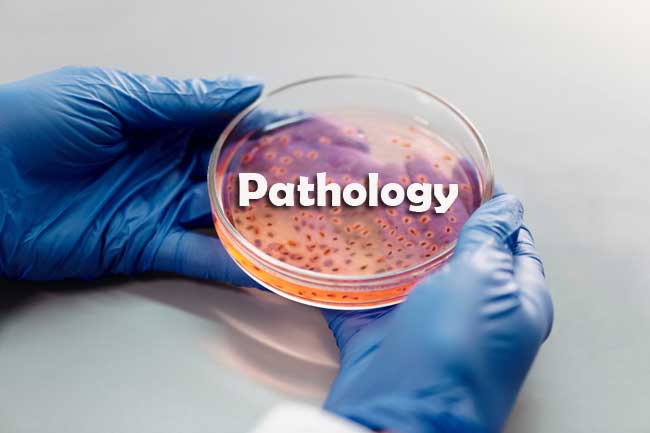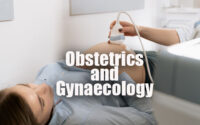Pathology Important Question
Pathology Important Question Papers Free Pdf is available. Download Pathology Important Papers from the below attachments for free of cost. Pathology Important Papers will definitely helpful for the aspirants to get an idea about the previously asked questions.

Here we provided Important Question Papers of Pathology. Pathology Important Papers is given below. The Aspirants who applied for the latest Pathology Recruitment for can check the Pathology Exam Important Papers and Study Material in the sections below.
Important Question on Pathology
1. Which of the following test parameter is not affected by diurnal variation:
1) Cortisol
2) Cholesterol
3) Growth hormone
4) Iron
2. Which of the following feature does not match with given pediatric round cell tumour:
1) Neuroblastoma: neuropil
2) Ewing‘s sarcoma: glycogen vacuoles
3) Burkitt’s lymphoma: LG bodies, dense blue vacuolated cytoplasm
4) Rhabdomyosarcoma: Flexner-Wintersteiner rosettes
3. Which one of the following is a false statement about Neutrophil Extracellular Trap (NETs):
1) They are extracellular fibrillar networks preventing spread of microbes by trapping them
2) They provide high concentration of antimicrobial substances at site of infection
3) Neutrophils remain alive after producing the network
4) The network contains nuclear chromatin
4. Fatty change in the liver in alcoholics is most likely associated with:
1) Reduced formation of acetyl- CoA
2) Reduction in lipolysis in adipose tissue
3) Increased β- oxidation of fatty acid
4) Increased synthesis of glycerol 3-phosphate
5. Hyperplasia rather than metaplasia is best represented by:
1) Benign squamous epithelium lining the true vocal cord
2) Bone in area of previous muscle injury
3) Increased goblet cells in the bronchus of a smoker
4) Increased goblet cells in stomach mucosa
6. In which of the following groups of chemical mediators, both are vasodilators ?
1) Histamine and tumour Necrosis Factor (TNF)
2) C3a and LTB4
3) Interleukin-1 and thromboxane A2
4) Prostacyclin (PGI2) and C5a
7. Which of the following groups of diseases fall into the same hypersensitivity reaction classification:
1) Allergic rhinitis and poison ivy
2) Graves’ disease and Goodpasture’s syndrome
3) ABO incompatibility and skin reaction to bee sting
4) Hyperacute transplant rejection and serum sickness
8. In which one of the following oncogene groupings are both oncogenes activated by translocation:
1) abl and c-myc
2) ras and erbB2
3) sis and N-myc
4) erbB2 and abl
9. In which of the following groups of chemical mediators are both mediators involved in the synthesis of adhesion molecules and chemotaxis?
1) C3b and Hageman factor XII
2) C5a and LTB4
3) LTC4 and histamine
4) C3a and platelet activating factor
10. Electron microscopy is useful for all of the following diagnostic purposes except:
1) Identifying viruses in tissues
2) Classifying a lymphoma as B cell or T cell type
3) Making a diagnosis of Whipples disease
4) Identifying immune complexes in renal glomerulonephritis
11. Large irregular densities and apparent cavitation with air fluid levels are noted on the chest x-ray of coal miner. These findings are most suggestive of:
1) Chronic silicosis with egg shell calcification
2) Superimposed tuberculosis
3) Simple coal worker pneumoconiosis
4) Asbestosis
12. Which description is true of the class II Major Histo-Compatibility complex:
1) It includes HLA loci A,B and C
2) It consists of a single transmembrane glycoprotein chain
3) It has beta 2 microglobulin as part of its glycoprotein structure
4) It presents antigens derived from Extracellular microbes & soluble proteins to CD4 Cells
13. A biopsy of renal allograft shows fibrinoid necrosis of small vessels. Which of the following mechanisms is most likely responsible.
1) Cell mediated cytotoxicity
2) Antibody and complement mediated damage
3) CD8 mediated damage
4) Natural killer cell mediated cytotoxicity
14. Transformation to acute leukemia may occur during the course of all of the following except:
1) Polycythemia vera
2) Chronic myelogenous leukemia
3) Hodgkins disease
4) Myelofibrosis
15. CSF cytology is not useful for the diagnosis of:
1) Leukemia
2) Medulloblastoma
3) Ependymoma
4) Meningioma
16. Which of following is not a type of paracortical lymphoid hyperplasia:
1) Castleman disease
2) Angioimmunoblastic lymphadenopathy
3) Dermatopathic lymphadenopathy
4) Dilantin lymphadenopathy
17. Which one of the following has an anti-apoptotic effect :
1) BCL-2
2) p53
3) BAX
4) BAK
18. Which of the Adhesion Molecule-Ligand pair (on Endothelial Cells & Leukocytes) does not match:
1) P-Selectin : Sialyl-Lewis-X
2) ICAM-1 : MAC-1
3) E-Selectin : PECAM-1
4) VCAM-1 : VLA-4
19. Binding of IgE Antibody to Mast Cell Surface IgE Fc receptors in Type I hypersensitivity leads to following events except :
1) Signal for Degranulation
2) Signal for Apoptosis
3) Signal for Activation of Phospholipase A2
4) Signal for Cytokine Secretion
20. A 5-year old boy has recurrent Staphylococcus aureus infections. His Peripheral Blood Leukocytes are normal in appearance. The Nitro Blue Tetrazolium (NBT) dye test is abnormal. Which of the following best describes the pathogenesis of the disease :
1) Deficiency of NADPH oxidase
2) Defect in microtubule polymerization
3) Deficiency of C3 &Ig
4) Deficiency of Myeloperoxidase
| Mock Test | Practice Set |
| Important Questions | Quiz |
| Sample Papers | MCQ |
| Model Question | Questions and Answers |
21. Both chronic bronchitis and emphysema are associated with-
1) Respiratory acidosis
2) Severe ventilation/perfusion (V/Q) mismatch
3) A low PaO2
4) Irreversible destruction of the respiratory unit
22. Which of the following disorder will most likely show a normal percentage of Eosinophils in the peripheral blood?
1) Strongyloidiasis
2) Hookworm infestation
3) Contact dermatitis
4) Drug allergy
23. Which of the following diseases or physical diagnostic findings is least likely to be associated with amyloidosis?
1) Congestive cardiomyopathy
2) Peripheral neuropathy
3) Nephrotic syndrome
4) Alzheimer’s disease
24. Which of the following infectious disease relationships is correctly matched?
1) Shigellosis: bradycardia, neutropenia, splenomegaly
2) Campylobacter jejuni: secretory diarrhea
3) Enterohemorrhagic Escherichia coli : Haemolytic uremic syndrome
4) Vibrio cholerae: mucosal ulceration
25. A patient who is taking hydrochlorothiazide abruptly develops fever, rashes, and oligouria. Additional studies reveal an increase in the serum BUN and creatinine, Eosinophilia and urine analysis with positive dipstick test for protein (2+). No casts are present. The mechanism for this patient’s disease is most closely related to-
1) Immune-complex deposition in the glomeruli
2) Obstructive uropathy
3) Type IV cellular immune reaction
4) Antiglomerular basement membrane antibodies
26. An obese 24-year old woman presented with long history of oligomenorrhea and hirsutism. She has palpable bilateral ovarian masses. An ultrasound of her ovaries would likely reveal-
1) Serous cystadenomas
2) Cystic teratoma
3) Subcortical cysts in both ovaries
4) Bilateral endometriosis
27. A 62-year-old woman who presents with colicky right flank pain is noted to have a renal stone in right ureter. A biochemical profile shows abnormalities in her serum calcium, phosphorus, and electrolytes. Which of the following tests most likely confirm the cause of her renal stone?
1) 24-hour urine collection for calcium
2) 24-hour urine collection for phosphorus
3) Bone scan
4) Serum Parathormone level
28. In diabetes mellitus, non-enzymatic glycosylation is most likely operative in the pathogenesis of
1) Peripheral neuropathy
2) Microaneurysm in the retina
3) Cataracts
4) Hyaline arteriosclerosis
29. The mechanism of postmenopausal osteoporosis is most closely associated with-
1) A reduction in number of osteoblasts
2) An increase in number of osteoclasts
3) Decreased mineralization of bone
4) Greater osteoclastic than osteoblastic activity in bone
30. A 3-year old boy who was normal at birth, is having difficulty in standing up and must push with his hand on his knees in order to stand. He has peculiar duck-like walk. The pathogenesis of his disease is most closely related to-
1) An autosomal recessive disease
2) Triplet repeats on the X-chromosome.
3) Defective anchorage of actin to the membrane glycoprotein
4) A congenital myopathy
31. Which of the following lymph node relationships is correct?
1) Syphilis: spirochetes rarely identified in primary and secondary types
2) Rheumatoid arthritis: sinus histiocytosis is a marker of increased disease activity
3) Cat-scratch disease: granulomatous micro-abscesses are similar to Lymphogranuloma venereum
4) Dermatopathic lymphadenitis: is commonly associated with vaccination
32. All of the following statements about Infective Endocarditis are true except:
1) It is most commonly caused by gram negative bacteria
2) It most commonly involves previously damaged valves
3) Valve perforation may occur
4) It is fatal if not treated
33. Mitral valve prolapse is characterized by all of the following except:
1) Prolapse of mitral valve leaflets into left ventricular cavity
2) An excess of mucopolysaccharide in valve spongiosa, which progressively replaces the valve fibrosa
3) Fibrillin-1 (FBN-1) mutations in few cases
4) A mid-systolic click or murmur
34. All of the following agents contribute to kidney regulation of systemic blood pressure except:
1) Renin angiotensin system
2) Aldosterone
3) Kallikrein-Kinin system
4) Lymphokines
35. Of the lung tumours, which type belongs to amine precursor uptake and decarboxylation(APUD) group of tumours:
1) Large Cell Anaplastic Carcinoma
2) Mucoepidermoid carcinoma
3) Adenoid cystic carcinoma
4) Small Cell Carcinoma
36. Glomus tumours originate in structures that are responsible for which function:
1) Blood pressure regulation
2) Temperature regulation
3) Taste sensation
4) Tactile sensation
37. Hirschsprung disease usually is caused by congenital absence of ganglion cells in which segment of the large intestine:
1) Caecum
2) Ascending colon
3) Transverse colon
4) Rectum
38. All of the following statements about pancreatic adenocarcinoma are true except:
1) It locally invades adjacent structures but rarely metastasizes to more distant sites
2) It may present as acute pancreatitis
3) Jaundice often is present particularly with tumours of pancreatic head
4) Back pain is common symptom
39. Which statement best characterizes membranous glomerulopathy:
1) It is most common cause of nephritic syndrome in children
2) Affected patients usually present with acute renal failure
3) The characteristic pathology is best described as diffuse proliferative glomerulonephritis
4) Electron Microscopy demonstrates numerous sub-epithelial immune deposits
40. In most cases of non-obstructive chronic pyelonephritis , bacteria reach kidney via:
1) Blood stream
2) Lymphatics
3) Batson plexus
4) Vesico-ureteral reflux
41. Which statement is true of prostatic cancer:
1) It most commonly arises in periurethral location
2) It is associated with an elevated hCG serum level
3) Bone is most common metastatic site
4) Most prostate cancers are sarcomas
42. All of the following statements about choriocarcinoma are true except:
1) It may occur after normal pregnancy
2) It can arise in Vesicular mole
3) It consists of malignant trophoblasts
4) It is treated with hysterectomy and radiation therapy
43. MEN syndrome type II b has all of the following components except:
1) Pheochromocytoma of adrenal gland
2) Medullary carcinoma of thyroid gland
3) Mucosal Neuromas
4) Pituitary adenoma
44. All of the following statements concerning Alzheimer disease are true except:
1) Associated with accumulation of Aβ protein & tau protein
2) Cerebellar atrophy is prominent
3) Neurofibrillary tangles are prominent
4) Disease is prolonged and progressive
45. Chordomas are nervous system neoplasms that have all of the following except:
1) Occurs in childhood
2) Location in sacrococcygeal region
3) Slow growth & prolonged Clinical Course
4) IHC shows Brachyury positivity
46. Adenoid cystic carcinoma is tumour of salivary gland that is characterized by:
1) Frequent involvement of parotid glands
2) Nerve invasion
3) Grossly cystic appearance
4) Short survival in affected patients
47. Which prognostic factor is most useful for primary malignant melanoma:
1) Breslow Thickness
2) Size of malignant cells
3) Number of multinucleated giant cells
4) Degree of surrounding inflammation
48. A young woman is diagnosed as having sarcoma botryoides of bladder. All of the following are true except:
1) Grossly shows a polypoid growth
2) Specific chemotherapy is effective
3) Tumour with cambium layer
4) Tumour of myofibroblasts
49. All of the following except one are criteria for Antibody mediated rejection of solid organ allograft:
1) Capillary deposition of C4d
2) Capillary endothelial activation
3) IgE deposition
4) Microvascular inflammation
50. All of the following are examples of molecular alteration in non-small cell lung carcinoma(NSCLC) being the target of targeted therapy, except :
1) EGFR kinase domain mutation
2) bcr-abl fusion
3) EML4/ALK fusion
4) K-ras mutation



